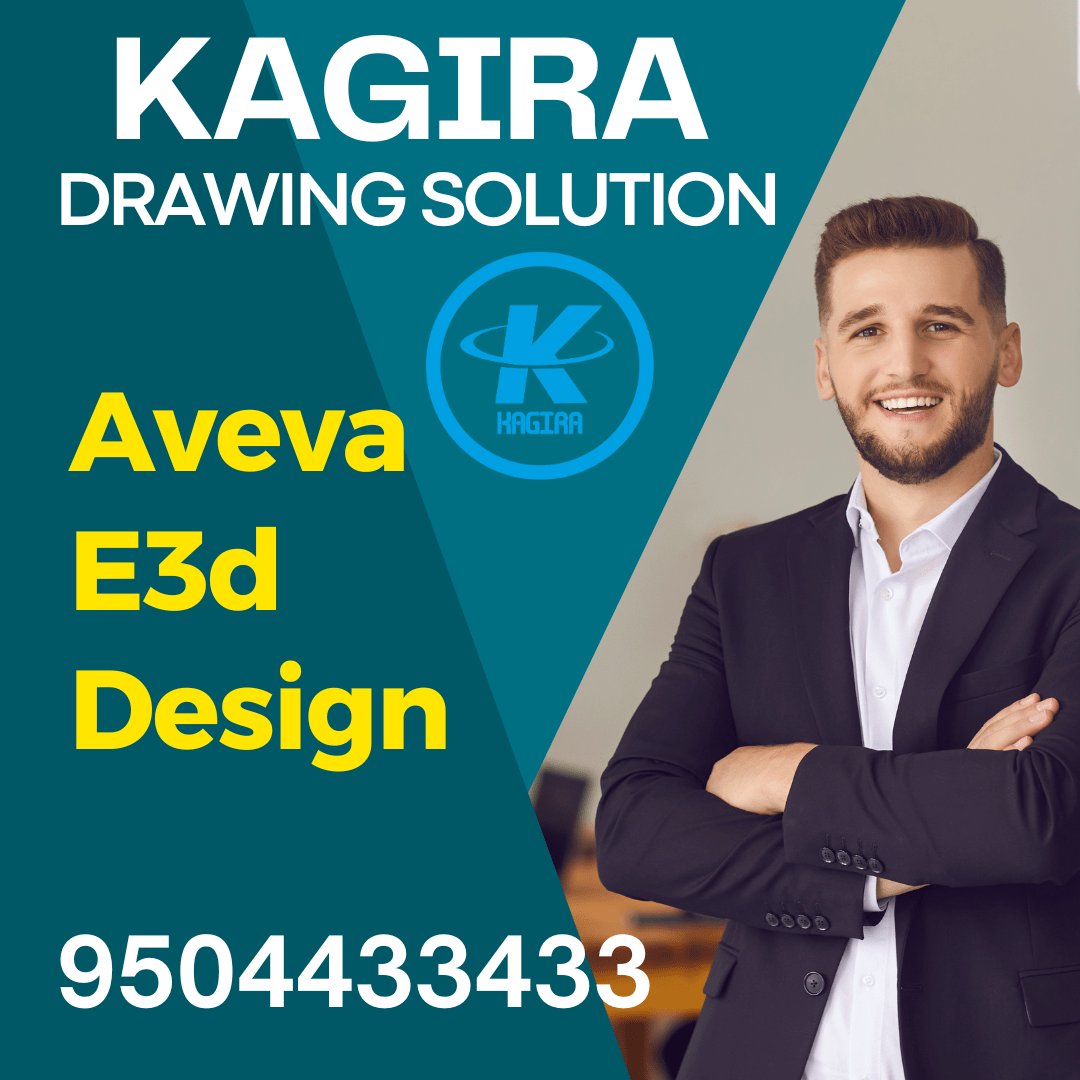In the evolving world of industrial design, precision and coordination are essential. AVEVA E3D Design is a next-generation 3D modeling solution built to meet the complex needs of industries such as oil & gas, power, chemical, and marine. It enables designers and engineers to build accurate, intelligent, and collaborative models that reduce rework and support efficient project execution.
From piping and structural modeling to drawing extraction and clash detection, AVEVA E3D integrates various disciplines into one unified platform. In this blog, we’ll explore practical workflows, expert tips, and real-world use cases to help you harness the full power of E3D—just like we do here at Kagira.
1. Complete Beginner’s Guide to AVEVA E3D Design
Target audience: New designers, trainees
What to include:
-
What is AVEVA E3D and how it differs from PDMS
-
Basic interface overview
-
Introduction to common modules: Pipe, Equipment, Draft, Admin
-
Tips to get started
2. How to Create Custom Pipe Supports in AVEVA E3D
Target audience: Designers working on plant layouts
What to include:
-
Overview of standard vs. custom supports
-
Step-by-step creation in the Pipe Supports module
-
Managing catalog data
-
Exporting and inserting into projects
3. Efficient Drawing Extraction Workflow in Draft Module
What to include:
-
How to extract GA and isometric drawings
-
Common setup mistakes
-
Using macros and attribute mapping
-
Automating updates when model changes
4. Catalog & Specs Management: A Practical Guide
For spec creators/admins
What to include:
-
Creating new specs using SPECON
-
Catalog structure (pipes, fittings, bolts, gaskets)
-
Avoiding common spec conflicts
-
Exporting/importing from legacy systems
5. 10 Common Errors in E3D (And How to Fix Them)
What to include:
-
Errors like “No Branch Table Entry,” “Element Not Found,” “Cannot Create Connection”
-
Why they happen
-
How to solve them step-by-step
-
Optional downloadable cheat sheet
6. Migration from PDMS to E3D: Step-by-Step Strategy
What to include:
-
Key differences between PDMS and E3D
-
What data can be migrated
-
Checklist before migration
-
Managing user permissions, project data, and specs
7. Hidden Productivity Tools in E3D You Might Be Missing
Engaging content
What to include:
-
Shortcuts and hotkeys
-
Hidden features like Compare Tool, Clash Detection, Navisworks Export
-
Tips for faster modeling
-
GIFs or screen captures to show them in action
8. Understanding the E3D Hierarchy: Zones, Sites, Units, Equipment
What to include:
-
Data structure philosophy in AVEVA E3D
-
Naming conventions
-
Best practices for organizing large projects
-
How it impacts drawing extraction and reporting
9. How to Set Up AVEVA E3D on a New System
For IT/Support or solo users
What to include:
-
System requirements
-
Installing E3D and licensing
-
Setting up projects, catalogs, and users
-
Initial checklist to ensure smooth project setup
10. Case Study: Real-Life Project Using AVEVA E3D
What to include:
-
Brief project overview (anonymous if needed)
-
Challenges faced in modeling/design
-
How E3D tools helped
-
Lessons learned / best practices
Conclusion
AVEVA E3D Design is more than just a 3D modeling tool—it’s a complete solution that supports better collaboration, smarter decisions, and faster project delivery. By applying structured workflows, leveraging intelligent design features, and staying updated with best practices, you can significantly improve your design accuracy and project efficiency.
At Kagira, we’re committed to sharing the knowledge and tools that help designers and engineers thrive in today’s demanding industry. If you found this blog helpful, don’t forget to check out our other E3D tutorials and guides. Have a question or looking for specific support? Reach out—we’re always happy to assist fellow professionals.




